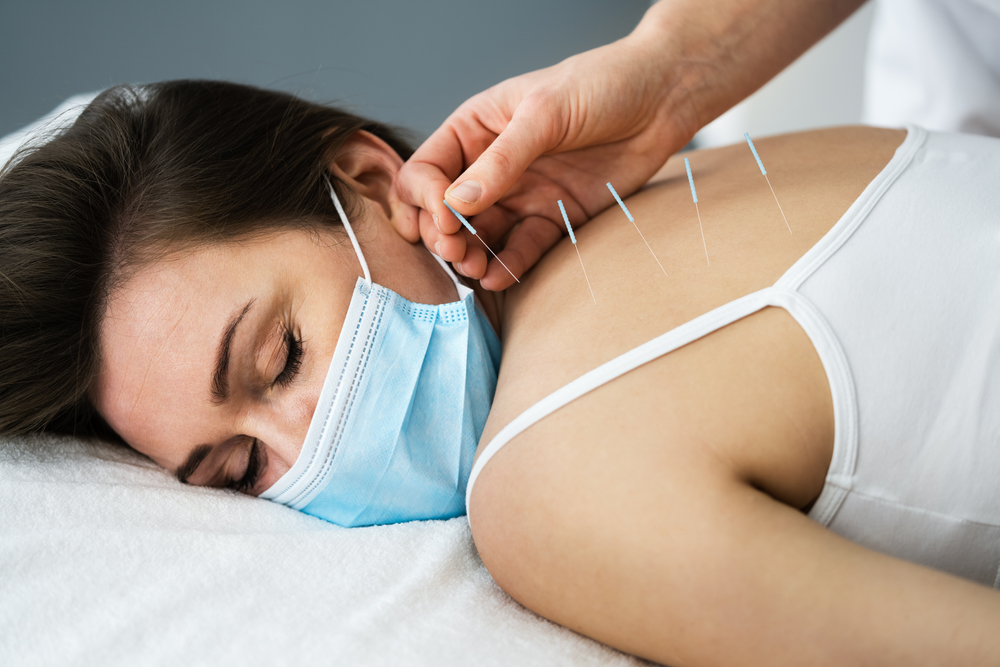Differences between Dry Needling and Acupuncture

As alternative treatments for pain relief and muscle tension continue to gain popularity, two of the most commonly discussed techniques are dry needling and acupuncture. Although touted as distinct practices with different origins, philosophies, and regulations both involve the insertion of thin needles into the body and are based on traditional Acupuncture. Understanding the differences between dry needling and acupuncture is essential, especially as these methods gain more attention in the healthcare community.
Origins and Philosophy: Acupuncture vs Dry Needling
Acupuncture, a cornerstone of Traditional Chinese Medicine (TCM), has a history that spans over 2,000 years. The practice is rooted in the concept of Qi (pronounced “chee”), which refers to the life force or energy that flows through the body along specific pathways known as meridians. According to TCM, illness and pain arise when the flow of Qi is disrupted. Acupuncture seeks to restore the balance of Qi by inserting needles at designated points along the meridians, promoting healing and well-being.
In contrast, dry needling despite being newly popularized, is based on much older practices. Many argue that dry needling, originally referred to as “trigger point needling” and other names, actually shares common roots with acupuncture. The technique involves inserting needles into muscle tissue, particularly at “trigger points,” or muscle knots, to alleviate pain and improve function. While dry needling focuses on musculoskeletal conditions, acupuncture addresses a broader spectrum of health concerns, including pain, stress, and overall wellness.
Despite its relatively recent adoption in the West, dry needling is not a completely new concept. In fact, it has a long-standing history under various names, with acupuncture being one of its roots. Over time, dry needling became the term commonly used to refer to the technique, even though it shares significant overlap with acupuncture.
Education and Safety Standards: Dry Needling and Acupuncture
A key difference between dry needling and acupuncture lies in the training and regulation of the practitioners. Acupuncturists are required to undergo extensive education and training, completing a four-year postgraduate program in acupuncture. This education includes over 2,000 hours of instruction in acupuncture techniques, anatomy, physiology, and clinical practice as well as Chinese herbal medicine. Upon completion, practitioners must pass rigorous national board exams, any required state exams, and meet ongoing education requirements. This ensures that licensed acupuncturists are well-equipped to practice safely and effectively.
In contrast, dry needling is not as strictly regulated. While some physical therapists and other healthcare professionals are trained in dry needling through continuing education courses, these programs are often short (2-3 days) and not standardized across the country. In many states, dry needling is not subject to national certification or minimum educational requirements, which can raise concerns about practitioner competence. It is also important to note that dry needling is banned in several states, including California, Hawaii, New York, Oregon, and Washington, due to concerns about its safety and the lack of regulatory oversight.
According to the National Certification Commission for Acupuncture and Oriental Medicine (NCCAOM), dry needling is a form of acupuncture. The NCCAOM emphasizes that the insertion of acupuncture needles into muscle tissue for pain relief is an established acupuncture technique. Licensed acupuncturists undergo years of formal education to master these techniques, and their practice is regulated by strict national standards to ensure patient safety. By contrast, dry needling, performed by individuals with limited training, can lead to complications, including bruising, nerve injury, and even more severe outcomes such as pneumothorax (a collapsed lung).
Mechanism of Action: How Dry Needling and Acupuncture Work
At the heart of the dry needling vs acupuncture debate is how each method works in terms of physiological effects. Both techniques involve the insertion of fine needles, but their approaches and purposes vary. Acupuncture focuses on balancing the flow of Qi through the body’s meridian system. By inserting needles into specific acupuncture points, acupuncturists aim to reduce pain, stress, and other conditions by restoring harmony and promoting overall health.
Dry needling, on the other hand, targets only musculoskeletal pain, specifically the release of tight muscle knots or trigger points. While dry needling and acupuncture both utilize the same type of needles, they are applied in different ways. Research has shown that the sites of trigger points in dry needling correspond with known acupuncture points over 90% of the time. Some studies even suggest that dry needling and acupuncture may represent the same physiological phenomenon in the treatment of pain disorders. The key difference lies in the theoretical framework: acupuncture focuses on the flow of energy through the body, while dry needling focuses on muscle physiology and the release of muscle tension.
The insertion of needles into trigger points causes a local twitch response, which helps to relieve muscle tightness and improve circulation. This is similar to the therapeutic effect of acupuncture, where needle insertion is believed to stimulate the nervous system, promoting pain relief and healing. However, acupuncture also takes into account broader principles of health and wellness, including the balance of energy throughout the body, while dry needling remains focused on musculoskeletal pain relief.
Safety Considerations: Acupuncture vs Dry Needling
One of the most important factors to consider when choosing between dry needling and acupuncture is safety. Because dry needling is not subject to the same rigorous educational and regulatory standards as acupuncture, the risk of injury or complications is higher. A study examining acupuncture needle-related emergency room visits found that 86% of these incidents were attributed to dry needling practitioners, while less than 1% were linked to licensed acupuncturists. This stark contrast highlights the importance of choosing a practitioner with appropriate training and experience.
The American Academy of Medical Acupuncture (AAMA) and its physicians have voiced strong concerns about the practice of dry needling by physical therapists and other healthcare providers without sufficient training. The AAMA has called for more stringent regulations, noting that improperly performed dry needling can cause serious harm, including nerve injury, infection, and even punctured organs. In contrast, licensed acupuncturists are trained in the safe application of needling techniques, including the ability to navigate sensitive areas of the body and avoid complications.
The Role of Acupuncture in Modern Medicine
Although dry needling has gained popularity in recent years, acupuncture remains a time-tested and trusted method for treating a variety of conditions, including musculoskeletal pain, stress, digestive issues, and more. As mentioned, acupuncture is not limited to musculoskeletal pain and can be used to treat a range of conditions related to both the body and mind. Furthermore, acupuncture practitioners are trained in Chinese herbal medicine, which can be used in conjunction with needling to enhance the therapeutic effects.
Acupuncture has also made its way into cosmetic treatments, such as cosmetic acupuncture, which is used to promote skin health, reduce wrinkles, and improve overall appearance. Acupuncture’s holistic approach to health has made it a popular option for those seeking natural, non-invasive treatments for both physical and cosmetic concerns.
While dry needling can provide relief for muscle tension and pain, its scope is narrower and its regulation less robust. In contrast, acupuncture, with its long and rich history and extensive training requirements, offers a more comprehensive approach to pain management and overall well-being. For those in areas like Lawrence, KS, seeking an acupuncture practitioner, it’s important to ensure that the practitioner is licensed and certified by the appropriate regulatory bodies to guarantee a safe and effective experience.
Conclusion
When comparing dry needling and acupuncture, it’s clear that both methods have their place in pain management and physical therapy. However, acupuncture offers a more holistic approach, backed by centuries of tradition and rigorous education and regulation. Dry needling, while effective for muscle pain, has raised concerns about its safety and the lack of standardized training for practitioners. As both techniques continue to evolve, it’s important for patients to carefully consider the qualifications of their practitioner and the safety measures in place before undergoing treatment. Whether you choose acupuncture or dry needling, ensuring that your provider is well-trained and licensed is the key to a successful and safe treatment experience.
Need a Licensed Acupuncturist Near You?
Here at Tripoint Acupuncture Plus, we’re dedicated to helping you achieve better health through personalized, compassionate care. Whether you’re seeking relief from pain, looking to improve your sleep, or addressing specific concerns like women’s health or digestive issues, our expert team is here for you. As the only practice in Kansas with a licensed acupuncturist certified in Neuro-acupuncture, we offer unique treatments tailored to your needs. Reach out to us today to start your journey toward wellness—book online or call us at 785-727-5079. We look forward to partnering with you on your path to better health!

